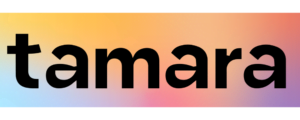In today’s job market, knowing how to use AutoCAD skills in real projects is key. This is true for fields like engineering, architecture, and construction. The need for people to use AutoCAD well is growing, as in the United Arab Emirates.
This guide will help you use your AutoCAD skills in real-world projects, improving your career and the projects you work on.
Key Takeaways
- AutoCAD skills are essential for success in engineering and architecture.
- Practical application of drafting and documentation enhances project quality.
- The UAE market offers diverse opportunities for AutoCAD professionals.
- Understanding actual project requirements is crucial for effective design.
- Step-by-step guidance can boost your confidence in using AutoCAD.
Introduction to AutoCAD in Real-world Applications
AutoCAD is a top-notch drafting software that has changed how professionals design and document. It is used in many fields, making it key for architects, engineers, and designers. Knowing how AutoCAD works in real life can improve your projects.
This software helps you create detailed and accurate drafts. It lets you see your ideas come to life before they are built. Architects use it to make detailed blueprints, showing everything from floor plans to elevations. Engineers use it to make complex diagrams that are crucial for project success.
Learning the basics of AutoCAD opens up new possibilities in your work. It’s useful for both simple and complex designs, and it’s a must-have for achieving top-notch results.
Understanding Project Requirements
Starting any design project requires a clear understanding of it. This means diving deep into the client’s needs. Knowing their goals is key to creating successful designs.
Begin by talking to the client and asking questions. This helps clear any confusion and ensures everyone is on the same page. Here are some important steps:
- Conduct site visits to get a better feel for the location.
- Document client specifications carefully so you do not miss any details.
- Define the project scope clearly. This sets out what needs to be done and helps guide your work.
Each of these steps is crucial for a project’s success. A thorough analysis of requirements leads to a solid understanding, which is what makes your AutoCAD drafts stand out.
Importance of AutoCAD Skills in Engineering
Mastering AutoCAD skills is key in engineering. These skills help you create precise designs. They also play a significant role in your project’s success. In engineering, being precise is crucial. A slight mistake can cause big problems.
AutoCAD is a powerful tool for modeling and drafting. It lets you see complex engineering ideas clearly, ensuring every detail is included. Using AutoCAD makes your work faster and of higher quality.
Keeping up with engineering technology trends is important. Companies look for people with strong AutoCAD skills. This can open up better job opportunities for you. Using AutoCAD improves your skills and helps improve engineering projects.
Learning 2D Drafting Techniques
Mastering 2D drafting is key to design success. Knowing design fundamentals lets you use AutoCAD well. This section covers important tools, commands, and practices for AutoCAD practices.
Start with basic commands like LINE, CIRCLE, and TRIM. These help you create and adjust shapes. Also, use grid and snap settings for better accuracy.
Practice often to improve your 2D drafting. Do exercises that challenge you to create different shapes and layouts. Working on real projects also improves your skills and confidence with AutoCAD.
- Use Object Snap for better object alignment.
- Organize drawings with layers.
- Try different line types to share information.
Mastering these techniques will prepare you for more advanced AutoCAD skills and boost your abilities in architecture and engineering.
Detailing and Specifications in AutoCAD
Detailing and specifications are key to your projects in AutoCAD. Good detailing makes your drawings clear and helps avoid costly mistakes. It’s also important to include accurate annotations, dimensions, and symbols.
When making AutoCAD drawings, pay attention to these important parts:
- Annotations: Use clear text to share important details like materials and how things go together.
- Dimensions: Make sure all dimensions are easy to read and correct. This will help with accurate measurements during construction.
- Symbols: Use standard symbols to share meanings quickly. This makes your drawings more straightforward to understand.
Following industry standards is crucial for professional work. Knowing local regulations can significantly improve your project’s success. Good detailing in your AutoCAD drawings improves quality and teamwork.
Creating Multi-View Drawings
Creating multi-view drawings is key to showing three-dimensional objects in two dimensions. These drawings show different views, such as the front, top, and side. They help us understand the design entirely. Learning CAD techniques for these drawings boosts your drafting skills and clarifies your design to others.
When making multi-view drawings, keep these tips in mind:
- Accuracy: Make sure all dimensions and angles are correct to avoid mistakes.
- Clarity: Use the proper scaling and follow standard rules to make your drawings easy to read.
- Consistent Views: Keep the views consistent to help viewers connect each perspective.
Using multi-view drawings can significantly help your projects succeed. These drawings are crucial for showing your designs to clients and team members in the United Arab Emirates. You will meet industry standards more quickly as you improve at making accurate and detailed drawings.
Mastering Construction Documentation
Construction documentation is key to a project’s success. In AutoCAD, you can make detailed plans. These plans act as a guide for contractors and clients, making sure everyone is in sync.
To excel in construction documentation with AutoCAD, follow these tips:
- Accuracy: Make sure all measurements and notes are correct. This helps avoid mistakes during building.
- Clarity: Use simple language and symbols in your plans. This makes communication clear.
- Detailing: Add sections and details that give a closer look at the project. This helps all parties understand better.
- Organization: Keep your documentation layout consistent. This makes it easy to follow and navigate.
By following these AutoCAD tips, you’ll make drafting easier and help your construction projects succeed. Good documentation leads to better teamwork and fewer misunderstandings, which makes the project flow smoothly.
Collaborating with Stakeholders Using AutoCAD
Working well with stakeholders is key to getting the most out of AutoCAD in your projects. Talking and working together with architects, engineers, and clients creates a better environment, helps with project communication, and brings new ideas.
To make teamwork smooth, try these steps:
- File Sharing: Share your AutoCAD files easily on platforms made for it. This way, everyone gets the latest versions and changes.
- Utilizing Templates: Create standard templates for projects you do often. This will reduce mistakes and speed up the design process.
- Cloud-Based Solutions: Cloud tools allow teams to work together in real time. They let everyone comment and change things simultaneously, making work more efficient.
Putting collaboration first and working closely with your stakeholders boost your project’s quality. It leads to better results.
Applying AutoCAD Skills in Different Industries
AutoCAD skills are versatile, allowing you to work in many industries. You can adjust your approach to meet specific needs. Each field has its challenges and requires specific skills.
In architecture, you combine precision and creativity. You make detailed blueprints that meet client needs and follow local rules. Civil engineering focuses on infrastructure, like roads and bridges. AutoCAD is key for these projects.
Interior design is about understanding space and how people interact with it. You use AutoCAD to create layouts and designs that are both functional and beautiful. In manufacturing, you focus on making parts and assemblies. Your skills help make production more efficient.
Every industry uses AutoCAD differently, which means you need to keep learning and adapting. Working on different projects helps you grow and build a strong reputation in various fields.
Utilizing AutoCAD for Effective Project Management
AutoCAD tools can significantly improve your project management workflow. They offer features that make tasks easier to manage and timelines more precise. Automated documentation cuts down on manual work, allowing for faster updates.
AutoCAD also boosts team collaboration. For instance, you can link project timelines with drawings. This makes scheduling more manageable and helps everyone understand project goals.
AutoCAD tools also track tasks well. You can assign tasks, check progress, and meet deadlines. This method improves efficiency and helps manage your projects better.
Using AutoCAD features can also save costs and boost productivity. It prepares you to handle project challenges effectively.
Challenges in Applying AutoCAD Skills
Working with AutoCAD can bring up many challenges. These AutoCAD challenges include technical problems, issues with team communication, and the need to keep learning.
Technical issues can arise and slow down projects. To overcome these, you must practice and keep up with software updates, which helps avoid problems with the software and hardware.
Communication problems can also cause trouble. They can lead to misunderstandings about what needs to be done. Using visual aids and holding regular meetings can help. This makes it easier to share ideas and solve problems together.
Lastly, you must always keep learning. AutoCAD is constantly changing, so you must stay current. Taking workshops, online courses, and working with others can help. This way, you can handle challenges better and improve your skills in real projects.
Bright Future Institute: Enhancing Your AutoCAD Skills
The Bright Future Institute is a top choice for improving your AutoCAD skills. It offers a variety of training programs for all skill levels. Whether you’re new or advanced, these courses focus on real-world applications.
At the Bright Future Institute, learning is hands-on and practical. You will work on real projects with expert guidance. This approach helps you learn and prepares you for real-world challenges.
Choosing the Bright Future Institute for AutoCAD training means building a solid foundation. You will learn in a collaborative setting with instructors and peers. This environment encourages growth and innovation.
Real Projects: Case Studies and Examples
Looking at case studies gives us a peek into how AutoCAD skills work in real life. You will see many real projects that show how AutoCAD is used in different fields.
In Dubai, a construction project used AutoCAD to make detailed floor plans. The team faced big challenges, like keeping the structure strong. They used AutoCAD’s advanced tools to improve their designs, work more efficiently, and follow local rules.
In Abu Dhabi, a public park was designed using AutoCAD. Landscape architects used it to plan and make the park sustainable. AutoCAD’s dynamic blocks helped them make changes fast, thanks to feedback from others.
These examples show how AutoCAD skills can change projects for the better. Each case study shows the value of flexible design and good team communication. With this knowledge, you can tackle your projects with confidence and new ideas.
Conclusion
Mastering AutoCAD skills is key to success in many industries. This article showed how AutoCAD boosts project efficiency and design quality. Knowing what your project needs and working well with others can make a big difference.
Think about how important it is to keep learning and getting better. The UAE’s construction and design fields are changing fast. To stay ahead, you need to improve your AutoCAD skills. This can lead to many new chances.
Remember, your AutoCAD journey is just starting. Use this powerful tool to show off your creativity and skills. The design and engineering world is waiting for your ideas.












